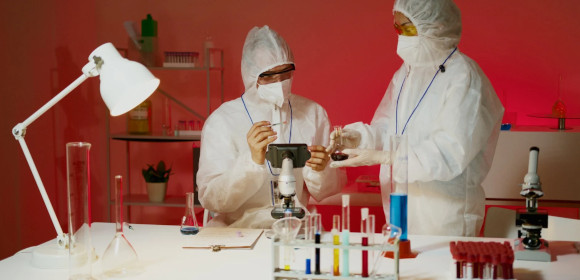What type of energy is stored in the bonds of chemical compounds?
Kinetic energy
Thermal energy
Chemical energy
Electrical energy


Two types of changes can occur on both mixtures and substances that have a specific set of changes in said object’s characteristics and properties. These two changes are physical and chemical. The latter type of change is the focus of this article.
A chemical change is one of the types of changes an object or a mixture of substances can undergo, which results in a total alteration of its physical and chemical properties.
It is very important to know how to distinguish and discern between physical and chemical change, as some chemical outputs are very harmful to the human body and physiology. One can observe various signs and indicators that will help the person identify whether or not a chemical change has occurred.
Begin by conducting a small observation of the compound or mixture and check if there are any changes in the object’s physical properties. Most occurrences of chemical change will include a change in the compound or object’s physical property.
When a physical change occurs it is often reversible when the proper amount of energy is exerted on the compound or object. A chemical change is irreversible, therefore you must determine if the object’s change is reversible or irreversible.
Some chemical changes give off heat or light after the chemical reaction happens. You must check if heat or light is present as it is a large sign of chemical change in the substance, object, or mixture. (See endothermic reaction and exothermic reaction)
Some chemical reactions emit gas, which results in a successful chemical change. Determine if the outcome is emitting gas or any form of smoke, but be careful not to inhale said gas.
A chemical change is an observable change of a specific compound or object, which results in an alteration of the chemical and physical properties of the compound or object. This type of change can only occur when the chemical and molecular structure of the compound is altered. A physical change is an observable change of a specific compound or object, which results in an alteration or change of the compound or object’s physical properties. This type of change is reversible, unlike chemical change.
A chemical reaction is an outcome that occurs when someone mixes two or more miscible substances in a mixture. This reaction causes chemical change to occur and emits heat in the form of thermal energy and chemical energy. Not only that, but chemical reactions have a lot of uses, one of which is their ability to create nuclear energy through nuclear fission.
There are many ways one can do to observe a chemical change in a specific mixture or substance. Most of these indicators or elements are related to the physical and chemical properties of the mixture or substance. These indicators can range from a change in smell, change of color, creation of precipitation around the vessel, formation of heat, and the creation of light.
A chemical change is a type of change that occurs or happens when a molecular makeup of a substance changes. Sometimes chemical changes are very dangerous as some compounds have drastic effects on the human body. Therefore it is important to know when a chemical change occurs in one’s surroundings.
Text prompt
Add Tone
10 Examples of Public speaking
20 Examples of Gas lighting
What type of energy is stored in the bonds of chemical compounds?
Kinetic energy
Thermal energy
Chemical energy
Electrical energy
During photosynthesis, what form of energy is converted into chemical energy?
Mechanical
Solar
Electrical
Nuclear
Which common device relies on chemical energy to function?
Solar panel
Battery
Light bulb
Electric motor
In what form is chemical energy released during combustion?
Light and sound
Heat and light
Electrical energy
Mechanical energy
What is the primary source of chemical energy for humans?
Sunlight
Food
Water
Oxygen
Which is not a form of chemical energy?
Glucose in food
ATP in cells
Wind
Petroleum
What kind of reaction involves the release of chemical energy?
Endothermic reaction
Exothermic reaction
Photochemical reaction
Electrochemical reaction
Chemical energy is primarily governed by which law of thermodynamics?
Zeroth law
First law
Second law
Third law
Which process in cellular respiration primarily involves the transformation of chemical energy?
Glycolysis
Krebs cycle
Electron transport chain
Photosynthesis
Which fuel type stores significant amounts of chemical energy?
Hydrogen
Helium
Nitrogen
Neon
Before you leave, take our quick quiz to enhance your learning!

